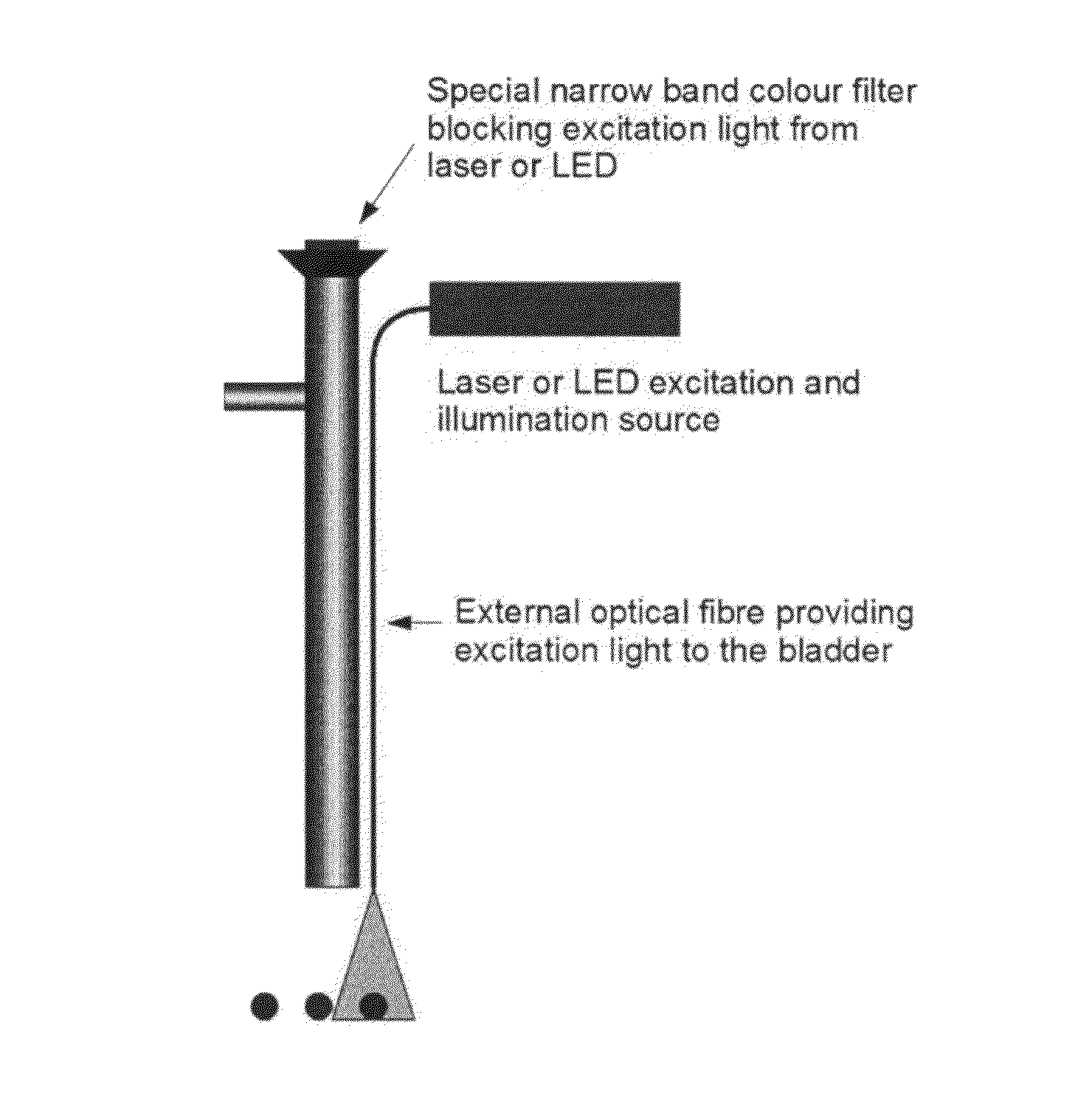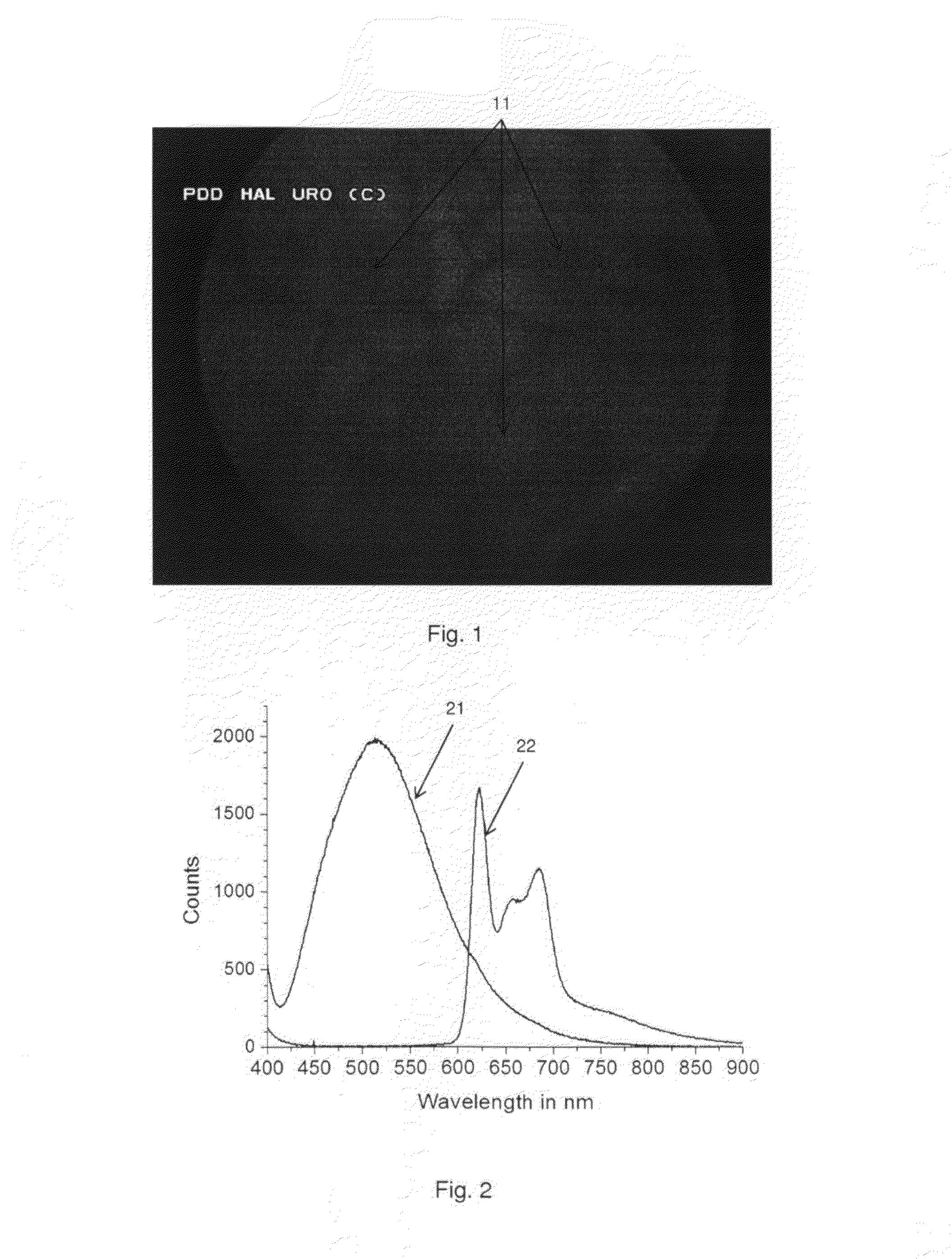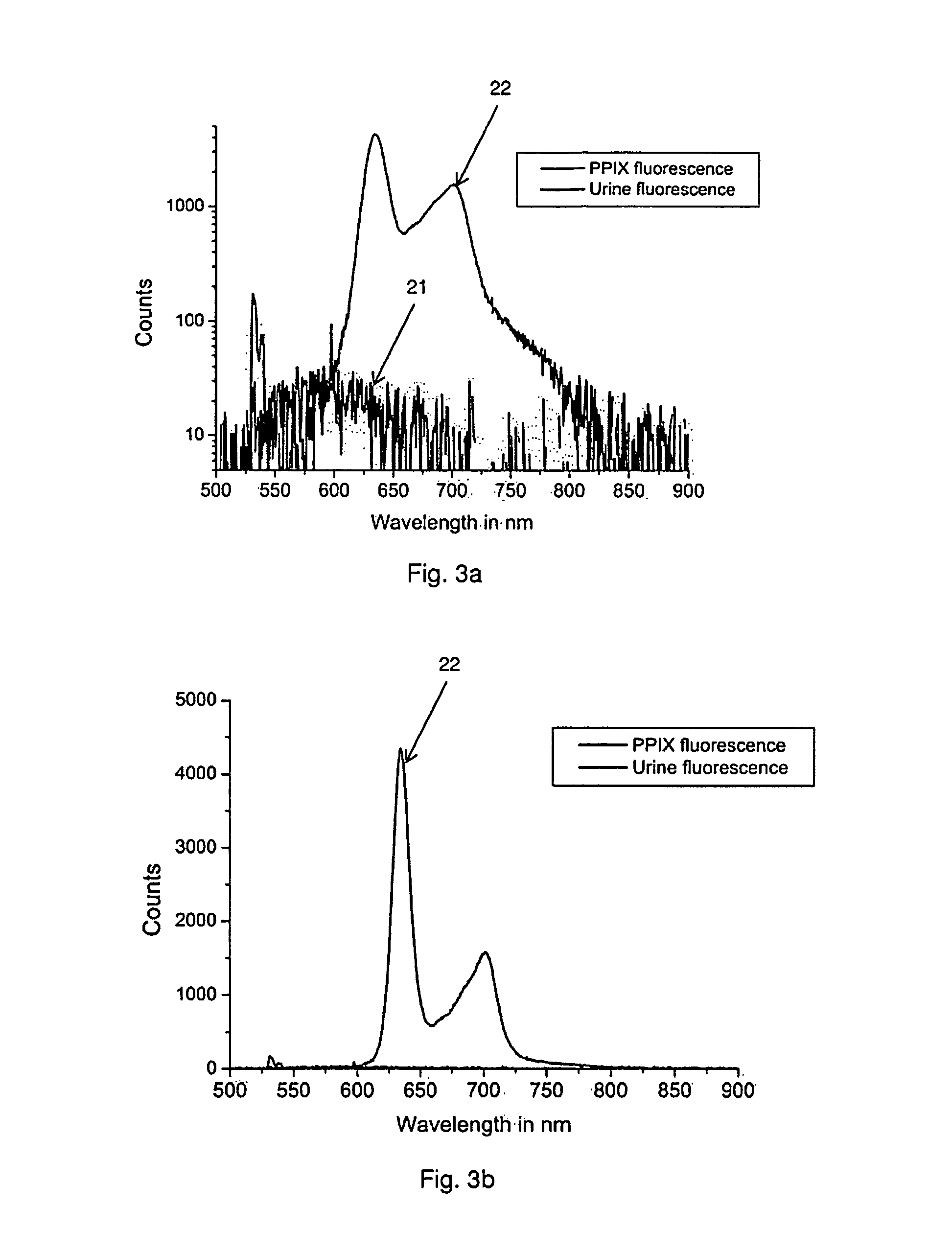Illumination System for Endoscopic Applications
a technology of endoscopic applications and liquid core fibers, which is applied in the field of liquid core fibers for endoscopic applications, can solve the problems of extremely vulnerable and high cost of liquid core fibers, and achieve the effects of improving the treatment of bladder cancer and/or tumors, and improving the diagnosis of bladder cancer
- Summary
- Abstract
- Description
- Claims
- Application Information
AI Technical Summary
Benefits of technology
Problems solved by technology
Method used
Image
Examples
Embodiment Construction
[0038]As stated above the present disclosure relates to an endoscope for examining a body cavity comprising tissue, the endoscope comprising a source of light consisting of a substantially monochromatic light source having a predefined central wavelength between 400 and 550 nm, means for guiding light from the substantially monochromatic light source towards at least a part of the tissue, and at least one band-rejection filter adapted to attenuate at least said central wavelength, wherein the substantially monochromatic light source is configured to generate autofluorescence in the irradiated tissue such that the irradiated tissue is observable, and wherein the endoscope is configured to display at least a part of the irradiated tissue through said band-rejection filter.
[0039]The present disclosure also relates to a method for illuminating at least a part of the inner surface of a body cavity of a subject for a viewer, the body cavity comprising tissue, the method comprising the ste...
PUM
 Login to View More
Login to View More Abstract
Description
Claims
Application Information
 Login to View More
Login to View More - R&D
- Intellectual Property
- Life Sciences
- Materials
- Tech Scout
- Unparalleled Data Quality
- Higher Quality Content
- 60% Fewer Hallucinations
Browse by: Latest US Patents, China's latest patents, Technical Efficacy Thesaurus, Application Domain, Technology Topic, Popular Technical Reports.
© 2025 PatSnap. All rights reserved.Legal|Privacy policy|Modern Slavery Act Transparency Statement|Sitemap|About US| Contact US: help@patsnap.com



